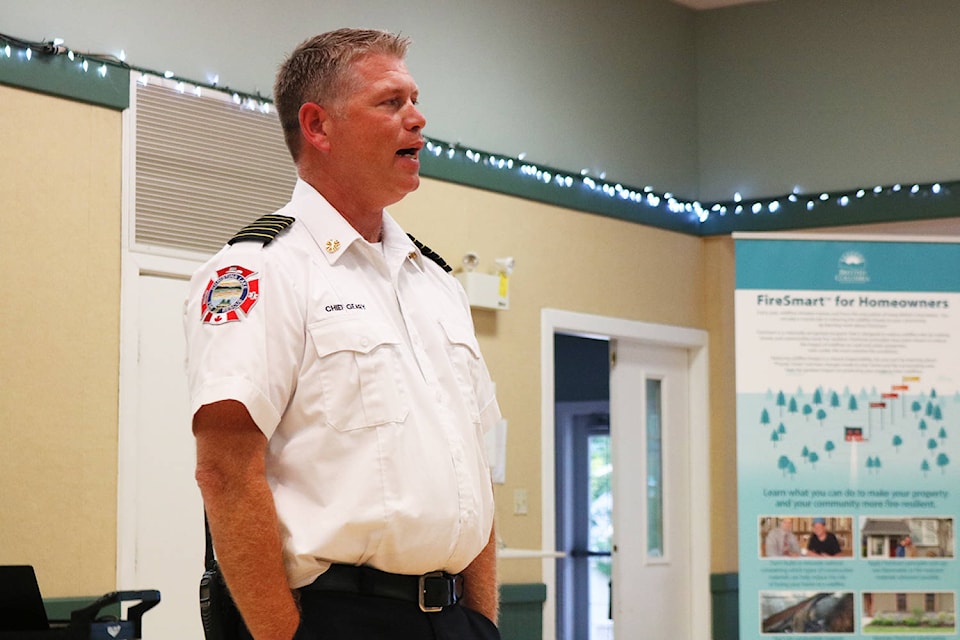Local and regional fire department officials gave Christina Lake residents a crash course in property fire protection last Thursday as part of the Regional District of Kootenay Boundary’s FireSmart training initiative. The program, which has been presented to residents throughout the region over the past few months, is meant to help property owners protect themselves and their homes, should a fire erupt or reach their front door.
“We’ve talked about this a lot in the past, but only when we’ve been under threat,” said Grace McGregor, the RDKB director for Christina Lake. But in the case of an emergency alert, it may be too late to make some of the changes recommended by the FireSmart program.
The point of the session, said RDKB interim manager of emergency programs Mark Stephens, was to ask residents: “What can you do to help us defend your home?”
Residents learned practical strategies, like keeping trees and branches away from their home, in order to cut down on likelihood that the flames would climb onto their roofs. Building materials can make a world of difference too, Stephens said.
More than half of all homes burned in wildfires are ignited by embers that have floated onto homes from as far as five kilometres away, Stephens said. But when a home has a non-flammable roof and a 10-metre buffer around it free of tree limbs and other potential fire hazards, it has nearly a nine in 10 chance of surviving a wildfire.
The session also explained the process for determining which buildings are protected by fire crews during an emergency.
Officials prioritize protecting primary residences and homes that have a better chance of survival. Evaluators use coloured ribbons to indicate a property’s priority level.
“If there’s a red flag on your driveway,” said regional fire chief Dan Derby, “that means we’re not coming back and your home won’t be protected.”
“There’s no amount of resources that we can throw at a large-scale fire that’s going to put it out — we have to understand that,” said Stephens, emphasizing the importance for properties to be maintained in order to cut down the risk of fire spreading.
Just weeks ago, Christina Lake firefighters saw what can happen when properties aren’t maintained to be fire safe.
When a blaze ignited at a Ritchie Road home, cedar shake siding allowed the flames to travel quickly, threatening to leap to nearby branches —something that local fire chief Joe Geary said could have led to neighbours’ homes being affected as well.
Beyond the fire threat, Geary said that low-hanging branches over the property’s long driveway prevented firetrucks from getting close to the house.
“It created a lot more work for us to run our lines down that driveway to try and get to the house,” Geary said.
The FireSmart program presented to residents last week suggests maintaining a 10-metre “defendable space” around a home, ensuring that driveways have wide and high clearance (a fire engine is approximately four metres tall, for reference), and that property addresses are clearly displayed and visible from the road.
B.C. Wildfire Service Officer James Katasonoff also advised residents to not let their guard down when it comes to fire protection because of recent rains in the region.
“You can’t get complacent,” Katasonoff said. Despite boasting green grass and naturally watered gardens, the Kootenay Boundary hardly saw half of its average moisture levels for the March to June period and is still vulnerable to annual wildfires.
